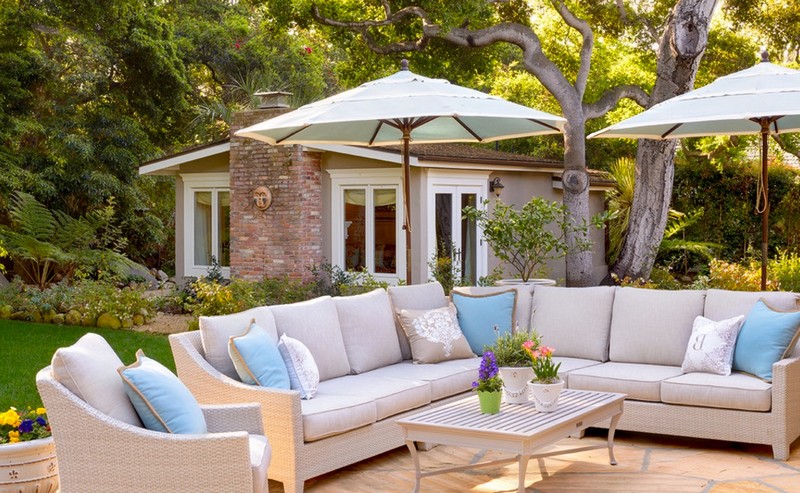Do you want to have a beautiful outdoor living room around your home? Now that summer is around the corner, you may start thinking about creating a cozy outdoor living space to embrace yourself to this wonderful season. With the right ideas and thorough preparation, it won’t be impossible for you.
The first thing that you need to do is determining the outdoor space that you want to transform into an outdoor living space. Even a limited patio area can be transformed into a fabulous living space. So, you don’t need to worry about the size of the space you have.
The important thing that you need to mind at this point is actually how you furnish that space. If you don’t know how to start, these following tips will help you transform your vacant area into a beautiful outdoor living room. Without further ado, let’s check this out!
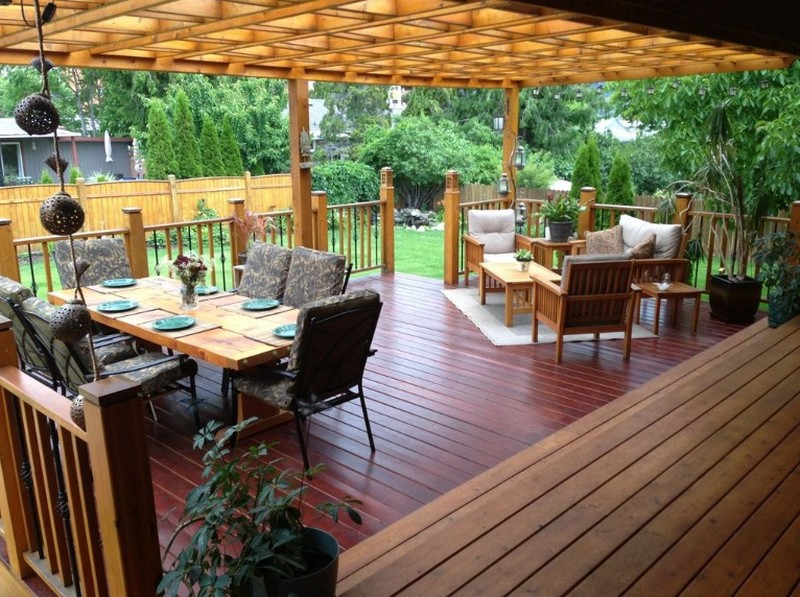
Tips for Decorating an Outdoor Living Space
You might have prepared some space to create an outdoor living space, but it will lifeless and dull without any decoration. A sofa and coffee table is a must to get the feeling of a real living room outside your home. Other than this piece, there are some other options available too.
Just like your indoor living room, you can add an outdoor rug to visually enhance your seating area. It provides a soft place for your bare feet to rest as well, making it perfect to enhance the comfort vibes in your outdoor living room. Choose the darker color one to hide dirt and debris.
In addition, you can also bring some outdoor pillows to bring comfort to your seating area. Outdoor pillows are typically filled with lightweight polyester and must be made from weather-resilient fabric. Just make sure to get the ones that suit the other elements for the best.
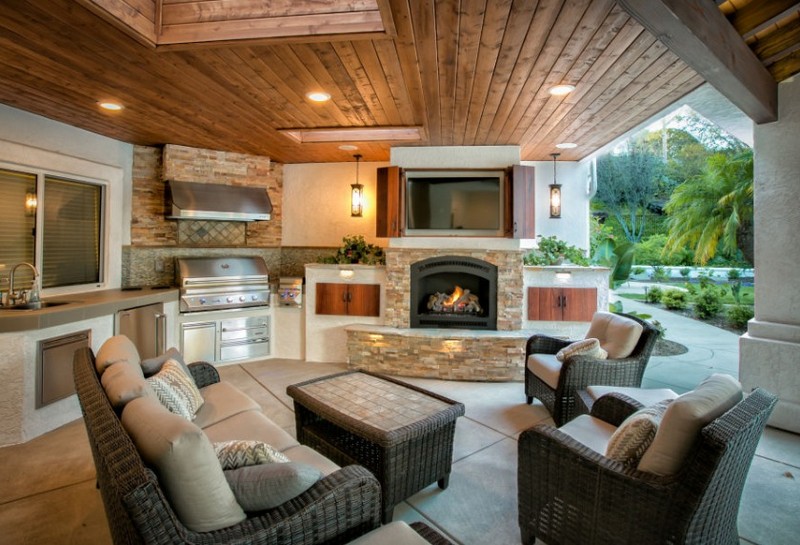
Moreover, you shouldn’t overlook the use of outdoor lighting too! You may love to enjoy the starry nights in your outdoor living space, so consider adding outdoor lighting that can provide enough light to the area. For decorative pieces, you can also add wall-mounted planters around your outdoor living space.
How to Choose the Right Furniture for Outdoor Living Space
Then, to make the most of your outdoor elements, you need to know a few considerations to select the right furniture for your outdoor living room too. First, you should take the weather into account. It will help you find the right material for your furniture.
Besides, it’s also crucial to measure the space you have. It will help you decide which piece you should place around the area. Don’t forget to provide space for moving around. Moreover, you need to pay attention to comfort as well. It’s because your outdoor furniture is meant to get you relaxed.
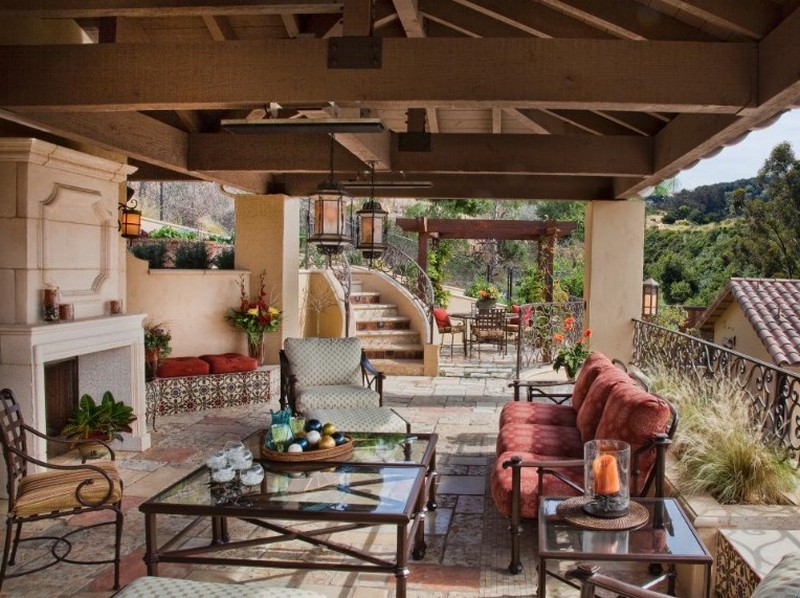
In conclusion, creating a cozy outdoor living space can be a great idea to enjoy the summer breeze and sunny days. Then, to make the most of this outdoor space, you need to decorate it well. Hope you enjoy this guide to create a wonderful outdoor living room!

Outdoor trends: terraces are turning into additional living spaces
Thanks to durable sofas, stylish tables, and the right decor, you can create a homely ambiance on your balconies and terraces.
Spring is on its way! With its arrival comes the opportunity to expand our living spaces onto balconies and terraces. This brings us to our main point. In 2017, balconies and terraces are transforming into second living rooms. Instead of plain white plastic furniture, we’re adorning our outdoor lounges with fashionable outdoor furniture and lovely embellishments.
- Consider investing in outdoor lounge seating
Why settle for only comfortable and stylish seating in your indoor living space? It’s now possible to set up a cozy lounge area outdoors where you’d never want to leave. Outdoor seating is no longer limited to just white plastic; you can even find Le Corbusier’s “LC3” designed for outdoor use! Most furniture manufacturers now offer weatherproof lounge furniture that is just as comfortable as a regular sofa. You have the option to choose from synthetic fiber textiles, outdoor synthetic leather, and outdoor leather for the seat covers.
If the budget or space limitations of your balcony or terrace don’t allow for upholstered furniture, you can make narrow benches more comfortable by adding soft (faux) fur. Just remember to remove the fur during bad weather as it’s not waterproof.
- Arrange an abundance of outdoor cushions
Numerous cushions in varying sizes are crucial – what’s essential in the living room is equally important outside. It’s essential that the covers are waterproof so you can leave the textiles outside without worrying about mold stains in inclement weather. An inviting throw blanket should also not be overlooked for the outdoor sofa; especially convenient on cool spring evenings.
In terms of outdoor textile colors, the trend in 2017 favors a vibrant and varied palette. Fresh colors such as mint, coral, or yellow are now favored for our indoor spaces.
- Outdoor coffee table
Sunglasses, magazines, and drinks need outdoor storage just as much as they do indoors—a coffee table or side table enhances the comfort of outdoor spaces. Options made of coated metal (for instance, from Hay or Norr11) or treated wood (Studio Segers) can be utilized.
Only the remote control doesn’t need a place outside—now you can finally take pleasure in the beautiful view of your garden or the urban skyline once again.
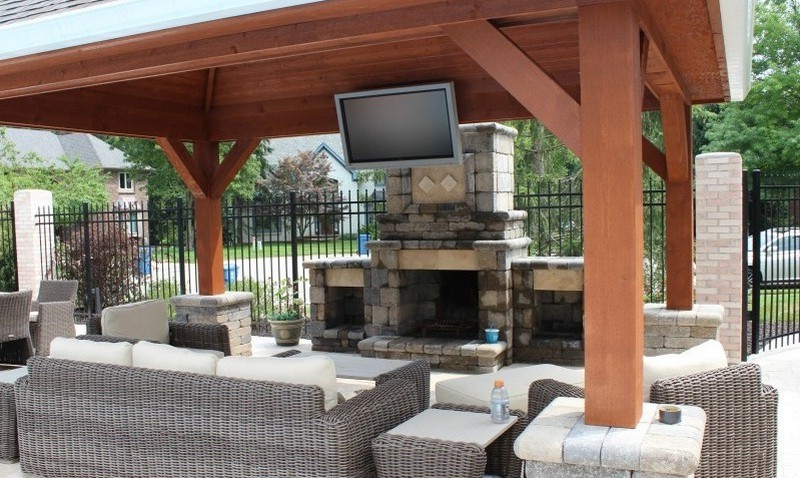
- Adorn the balcony table with a charming vase
The same holds true for decorations: what we appreciate in our living rooms brightens up our outdoor living areas as well. Placing a lovely vase (with tulips, for instance!) on the balcony table along with colorful tea lights and a patterned tray creates a very inviting outdoor season.
- Include an abundance of plants
Balconies and terraces should be adorned with plants and flowers! Many people are hesitant about gardening, despite the presence of low-maintenance and easy-to-care-for plants such as ivy, palm trees, or cacti. It’s hard to go wrong with these selections, and an outdoor living area teeming with plants always feels very inviting.
- Illuminate the balcony and terrace thoughtfully
For cozy evenings post sunset, suitable lighting on the balcony is necessary—not just lanterns and candles. You can create a snug ambiance with fairy lights, outdoor-appropriate hanging lights (or even outdoor pendant lights). Illuminated plant pots (for instance, via Degardo and Mialight) are also a unique idea.
- Place an outdoor rug
A weatherproof outdoor rug can provide a warm and inviting atmosphere even on the ground. Additionally, your feet will appreciate it as the stone floors on balconies and terraces tend to be quite chilly, particularly in spring. Graphic patterns are suitable for almost every lifestyle; colorful ethnic patterns lend a slightly more exotic feel to balconies and terraces.
- Embellish the exterior walls too
Bare walls not only make apartments feel unwelcoming, they have the same effect on balconies and terraces too. Consider adding trellises for climbing plants or hanging flowerpots to cover those drab concrete walls.
- Privacy considerations
We pull the curtains in our living rooms, so why not outside? For a comfortable living experience on the balcony and terrace, good privacy protection is essential. It provides protection and privacy. Tall grass, hedges, wicker fences, and bamboo are popular choices for outdoor settings. A slatted wall or attractive textile coverings are also suitable for the balcony.
- Serve tasty treats outside
Once you’ve arranged the furniture and decorations for your second living room, there’s just one more element needed to create a cozy ambiance on the balcony and terrace: some delicious snacks on the table. Fresh fruit, nuts, or other delectable bites invite you to linger—and truly make our outdoor living spaces feel comfortable in spring!
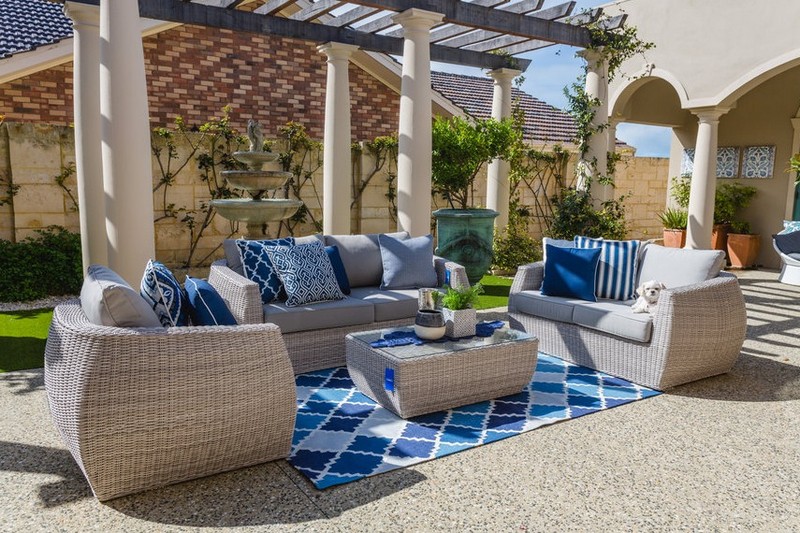
Ideas & inspiration for your outdoor space
One option is to place a sun lounger under a cherry tree, set up a hammock in a shady spot, or position some rattan chairs amidst olive, eucalyptus, and lavender trees. During the summer, many of us prefer to spend leisure time in the garden or on the balcony. In this piece, we will present ways to turn your personal outdoor area into a true outdoor living space.
Outdoor living – embracing open-air living
As the temperature gradually increases and the sun becomes more intense, we increasingly gravitate towards outdoor living. Rather than reclining on the living room couch, we find ourselves lounging on a garden lounger, soaking up the sun’s warmth. For several months, the balcony and garden become our own “outdoor living room.” Here, we can unwind and restore our energy while surrounded by the scent of lavender and the graceful dance of butterflies. But how can you design an outdoor space? Which plants are suitable, and what should be taken into account when planting them?
5 concepts for an outdoor living space
If you’re still seeking inspiration for an outdoor living space, we have five suggestions that can assist you in transforming your personal area into a sanctuary of well-being. Towards the end of this post, you will discover three important tips for planting, ensuring that you can relish your outdoor living space for an extended period.
- Outdoor living space with a vacation ambiance
Craving a touch of Mediterranean holiday spirit? A splendid idea for a sunny terrace or a south-facing balcony is to create a Mediterranean-style outdoor living area. By incorporating sun-loving plants like lavender, laurel, olive trees, oleander, eucalyptus, citrus plants, bulbs, fig trees, bougainvillea, or lantana, your terrace or balcony can quickly transform into a holiday sanctuary.
Natural materials such as wood, bamboo, or terracotta, along with a Mediterranean herb garden featuring thyme, rosemary, olive herb, sage, and oregano, complete the overall Mediterranean ambiance. Climbing plants such as the black-eyed Susan can also double as a privacy screen.
- Outdoor living area beneath the trees
When establishing a shaded spot beneath trees or on a north-facing balcony, it’s advisable to use plants that tolerate shade. Examples include shade-tolerant perennials like hosta, heuchera, or astilbe, as well as evergreen plants such as ferns, ivy, or boxwood.
Certain bedding and balcony plants such as coleus, fuchsia, begonia, or busy lilies also thrive in shaded conditions. You can enhance the ground with decorative oak wood chips, providing natural evaporation protection while appearing visually appealing. Now, with a few chairs, you can relax in the shade during scorching 30-degree weather!
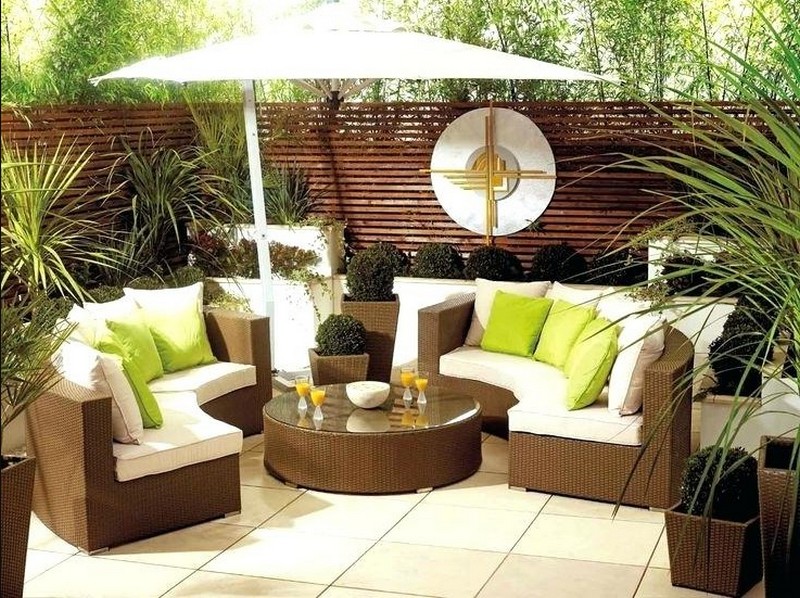
- Relaxation area featuring grass
A low-maintenance outdoor living space idea involves a lawn adorned with hardy, perennial ornamental grasses. The green and cream hues also deliver a calming and soothing effect. Moreover, there are varieties that transition to reddish tones in autumn, creating a captivating color gradient. For additional diversity, consider interspersing some flowering perennials amidst the grasses.
For sunny locations, consider using sedge grass, blue fescue, miscanthus, and pampas grass. Suitable sun-loving perennials include coneflowers, sunflowers, cranesbills, sedums, or bearded irises. In shaded areas, you may plant golden ribbon grass, woodland sedge, specific types of sedge like Japanese sedge, or palm leaf sedge, combined with shade-tolerant Heuchera or hosta varieties as needed.
Certain ornamental grasses such as pampas grass, giant miscanthus, or fountain grass can grow up to three meters high, making them excellent privacy screens.
Here’s a neat tip for adding variety to your lawn garden: Some ornamental grasses boasting attractive autumn hues or lovely pompoms aren’t frost-resistant. Instead of planting them in a bed, simply place them in an attractive pot as an additional feature and replant them annually.
- Snack corner for balcony & terrace
You can embellish your outdoor living space not only with vibrant flowers or grasses, but also with delectable vegetable and fruit plants, creating a snacking balcony or garden corner. Instead of indulging in chips, you can munch on cherry tomatoes and strawberries! Since vegetable and fruit plants generally require ample sunlight, the snack corner thrives in sunny and partially shaded locations, suitable for both raised beds and pots.
Strawberries, salads, and herbs like borage, chives, basil, parsley, or dill are ideal for small pots or balcony boxes. In larger containers or in the garden, you can cultivate berry bushes and fruit trees such as raspberries, blackberries, patio peaches, figs, apples, or currants. Special compact pot varieties are available for terrace or balcony cultivation.
Vegetables for snacks can also be cultivated in a corner designated for snacks. Radishes, cherry tomatoes, mini cucumbers, and small peppers are especially suitable for snacks. It is not necessary to have a large vegetable garden to grow snack vegetables; a large raised bed or several large containers will suffice. Some vegetables are now available in compact forms, such as low-growing pepper plants or small bush tomatoes.
Lastly, some marigolds and nasturtiums with their edible flowers will provide a colorful touch.
Advice: For snacks in (partially) shaded areas, wild garlic, woodruff, parsley, wasabi, or wild strawberries are recommended. These plants generally require less sunlight.
- Natural outdoor area for bees and butterflies
Of course, you can also create a snack corner for bees, butterflies, and other insects. A colorful meadow with flowering plants rich in nectar and pollen is not only visually appealing but also provides food for many insects. Summer flowers and bee-friendly perennials can also be planted on the balcony. Cornflowers, yarrow, cranesbills, two-tooth, scented stone, lavender, hogweed, sedum, creeping goose, heart balsam, marigolds, straw flowers, bluebells, unfilled marigolds, snapdragons, and carnations are among the plants that are considered bee-friendly.
All types of flowering plants are also very popular with bees and butterflies. By growing thyme, rosemary, borage, wild garlic, savory, lovage, ribwort plantain, or sage, you will not only please your taste buds, but also many small garden inhabitants.
Apple or cherry trees are a great addition to a natural outdoor area. These trees bloom relatively early and provide food even in spring. Berry bushes are also highly favored by insects. For the autumn, you can plant autumn-blooming plants such as bluebells, autumn crocuses, cranesbills, red coneflowers, bee friends, and autumn anemones.
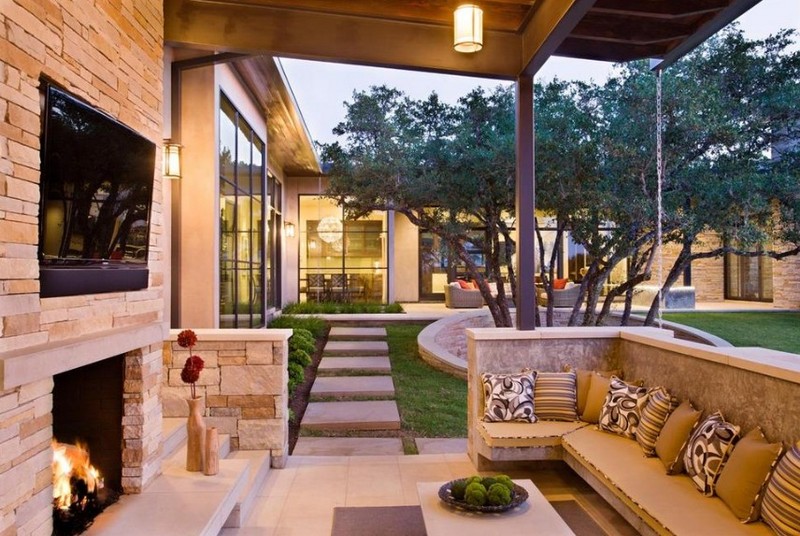
Creating an outdoor area – 3 tips
However, before embarking on the journey to materialize your dream, we have three essential tips for you. With these tips, we aim to help you find the right outdoor area for your garden or balcony, as not every outdoor area can be established in every garden or on every balcony. Some plants require specific conditions, such as a lot of sun and light. Only when these conditions are met can they grow and thrive well. Evaluate if the plant’s preferences align with the location or if there might be alternative options. For instance, if your balcony is too shady for petunias, geraniums, or thunbergias, you could also create a blossoming outdoor area with fuchsias or begonias.
Consider cold resistance
An important question to consider before establishing an outdoor area is: Do I want a long-lasting outdoor area or do I want to create a new outdoor area every year? Perhaps you also want to establish a mix of long-lived and short-lived plants, so that most of the plants accompany you for several years and a few provide fresh variation each year? Depending on your answer, there are various plants available for your outdoor area.
For a short-lived outdoor area, you can opt for various classic balcony plants such as petunias, begonias, busy Lizzies, geraniums, or wishbone flowers. With their vibrant flowers, they bring you joy from May until the autumn. When the first frost arrives, it’s time to bid farewell. With this type of outdoor area, you can plan which flowers you want to decorate with each year. Some frost-sensitive plants such as lantana or fuchsia can also easily survive the winter. Incidentally, most Mediterranean plants, such as lemon trees, olive trees, rosemary, and lavender, are not sensitive. They often survive mild winters without any issues. However, it’s advisable to plant the plants in pots so they can be positioned close to the house wall during winter and wrapped in fleece or an old blanket. In case of severe and prolonged frost, you can place them, if necessary, in a frost-free garage, a cool and bright basement, or a conservatory. The article “Overwintering potted plants” contains numerous tips for overwintering potted plants.
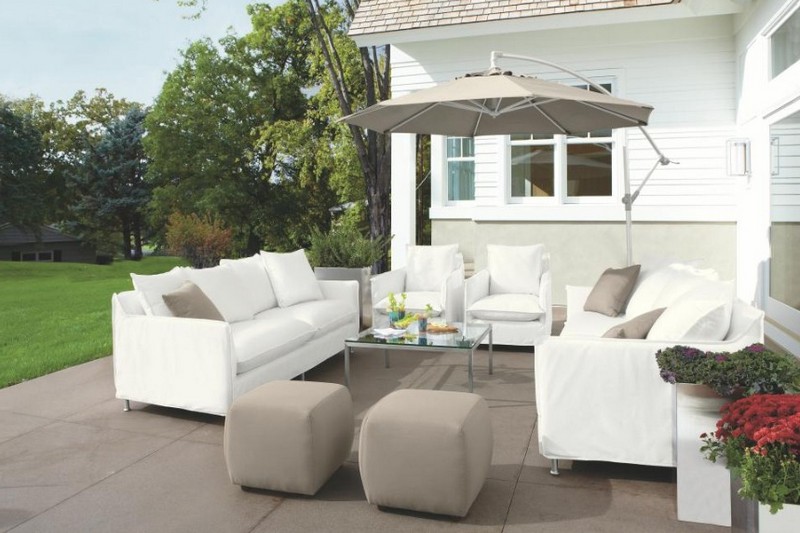
If you prefer things uncomplicated, hardy and perennial plants are the right choice. Many local trees, perennials, and ornamental trees, for example, are so hardy that they can accompany you for several years. Hence, such plants are ideal for long-lasting outdoor areas.
Choose plants suited to the location
Do you intend to plant on a shadowy north-facing balcony or a sunny terrace? Depending on the area you want to transform into a private outdoor area, you should consider which plants will thrive here. There is a suitable plant for every location!
Do plants prefer sunlight or shade?
While many plants thrive in full sun all day, some prefer shade, especially during the heat of the day. For example, plants native to the Mediterranean or South America, such as scented stonewort, magerite bush, or black-eyed Susan, do well in full sun and warm locations, and this also applies to many fruit and vegetable plants. On the other hand, hostas, begonias, ferns, ivy, and fuchsias thrive in shade, as do plants like wild garlic or woodruff.
Should I plant in buckets or garden beds? The choice between pots and garden soil matters, as potted plants often require more water and nutrients, and therefore need extra care. If you don’t want to water often, it’s best to choose more drought-tolerant plants such as thyme, rosemary, sedum, purple coneflower, sage, or lavender. Plants sensitive to frost are usually better off in pots, as they can better survive the winter.
What type of soil do plants prefer? The type of soil in your garden matters; nutrient-rich, permeable, humus-rich soil offers a wide range of options, including classic bedding plants, balcony plants, perennials, grasses, fruit trees, and vegetables. Fruit trees, perennials, and vegetables can also grow in loamy soil, which is a little heavier and usually more moist. In contrast, drought-loving plants thrive in sandy, dry soils with fewer nutrients, making them suitable for wildflowers or frugal perennials such as broom, lavender, giant tumbleweed, sand phlox, or bedstraw.
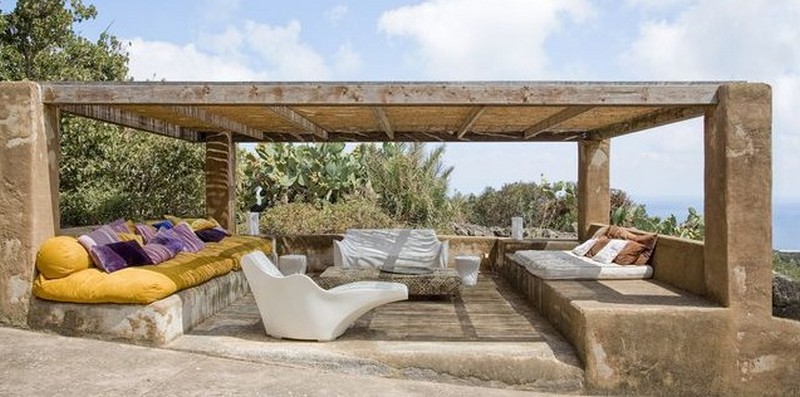
Consider the height and width of the plants.
When creating garden beds or container plants, remember to consider how big and wide the plants will grow over time, both perennials and annuals. For instance, tomatoes can reach two meters in height, and zucchini plants can take up more than one square meter of space. Therefore, plan accordingly when creating your outdoor living space. If you have a small balcony, consider using smaller, low-growing varieties, and explore options like vertical pallet beds or hanging baskets to accommodate more plants.
If you follow these tips, nothing will get in the way of your outdoor living space. Enjoy gardening and relaxing!
